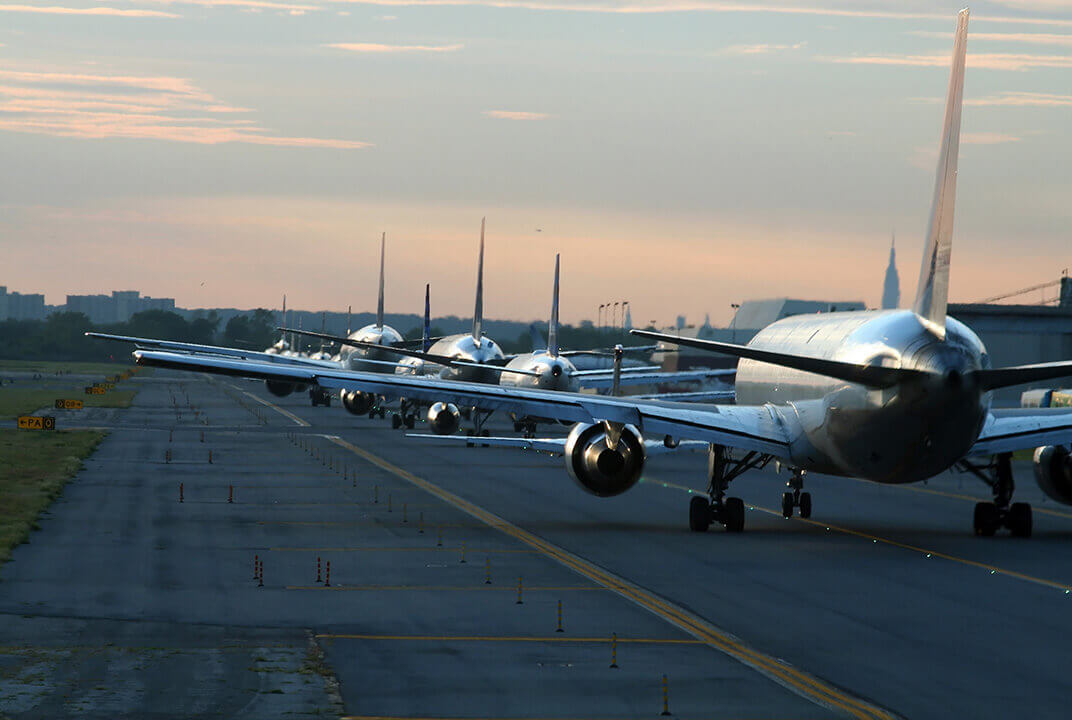Insight | ESA and Inmarsat to open up the skies with Iris
ESA and Inmarsat to open up the skies with Iris
null
Iris will mark a new era of secure communications in the aviation industry and position Europe at the forefront of ATM innovation.
In the past, satellite communications were used specifically for planes flying over the ocean. But the skies over Europe are getting more crowded every year, and the radio frequencies we use to manage those flights are nearing full capacity. Delays and cancellations are common due to busy air traffic, causing frequent bottlenecks. If this trend continues, the economic consequences could be severe. Airspace is a vital infrastructure in today’s economy, just as important as roads, railways and ports.
Today, while you may be able to text with your smartphone in the cabin, pilots and controllers still use VHF radio to communicate via voice calls to air traffic control. These calls encumber the radio spectrum and make up a large portion of an air traffic controllers workload, limiting the number of planes that can be in the air at a given time.
In order to modernise European air traffic, the European Commission and the Single European Sky ATM Research (SESAR) programme aim to raise today’s airspace capacity, manage traffic more efficiently, and reduce the environmental impact of flying.
Tackling busier skies with satellite technology
Such modernisation can only be achieved with satellite technology, and that is why the European Space Agency (ESA) has recently launched the Iris Programme. Iris is a safe, secure satellite-based data link to relieve pressure on existing terrestrial communications, which are near capacity. With Iris, satellite communications will no longer be reserved for planes over the ocean, as continental flights can now benefit from its safe, secure, and highly resilient connectivity. “Iris is an application that will operate on Inmarsat’s SB-S platform,” says Captain Mary McMillan, VP of Safety and Operational Services for Inmarsat. “In Europe, Iris is the future of real-time, secure air traffic management.”
"In Europe, Iris is the future of real-time, secure air traffic management."
Iris brings momentous benefits to aviation. For better air traffic management, controller to pilot communications previously made using voice are now done through broadband digital text. Position reports, clearances, runway conditions are all sent and received via terminals in the cockpit and the flight control facility.
To benefit airlines, Iris enables precise flight control with ‘4D’ trajectories, pinpointing an aircraft in four dimensions: latitude, longitude, altitude and time, which is one of the major concepts defined in SESAR. This will bring precise tracking of flights through Trajectory-based Operations (TBO), allowing pilots and controllers to collaborate on flight trajectories and calculate the shortest available routes, cruise at optimum altitudes, and use continuous climb and descent paths, saving fuel and improving the environment. The last of these is particularly important – because, as Captain McMillan notes, we are fast approaching a time when “airlines will not only have to pay for the fuel they buy, but also for the fuel they burn.”
And last but not least, passengers across Europe and beyond will benefit from Iris. Airlines can now schedule more flights to popular destinations using the most optimal (and hence most in-demand) routes, where passengers are more likely to find flights with their preferred airlines that match their intended travel plans. With Iris’ more precise aircraft positioning, even though passengers are travelling through crowded skies, they stand more chance of reaching their destination on time – or ahead of it.
Unprecedented security for the digital age
Analogue aircraft communications of the past were simple and easy to secure, but the transition to high-speed broadband IP services ushers in an era of greater connectivity and more devices with the potential to connect. Iris protects aircraft communications from cyber threats with security gateways. These gateways provide a VPN barrier between the ground and each aircraft that assures mutual authentication and integrity of data exchange. They also securely connect the flight management systems on-board the aircraft to the corresponding systems used by air traffic controllers on the ground.
Inmarsat’s SB-S and Iris are among the leading technologies in the effort to modernise the way air traffic is managed. These programmes offer momentous benefits – at the highest level, they boost economic vitality, spare the environment from unnecessary emissions, and increase safety. They help guide, track, and connect aircraft more precisely and efficiently, allow more planes in a given airspace, reduce in-flight delays, and avoid bad weather.


